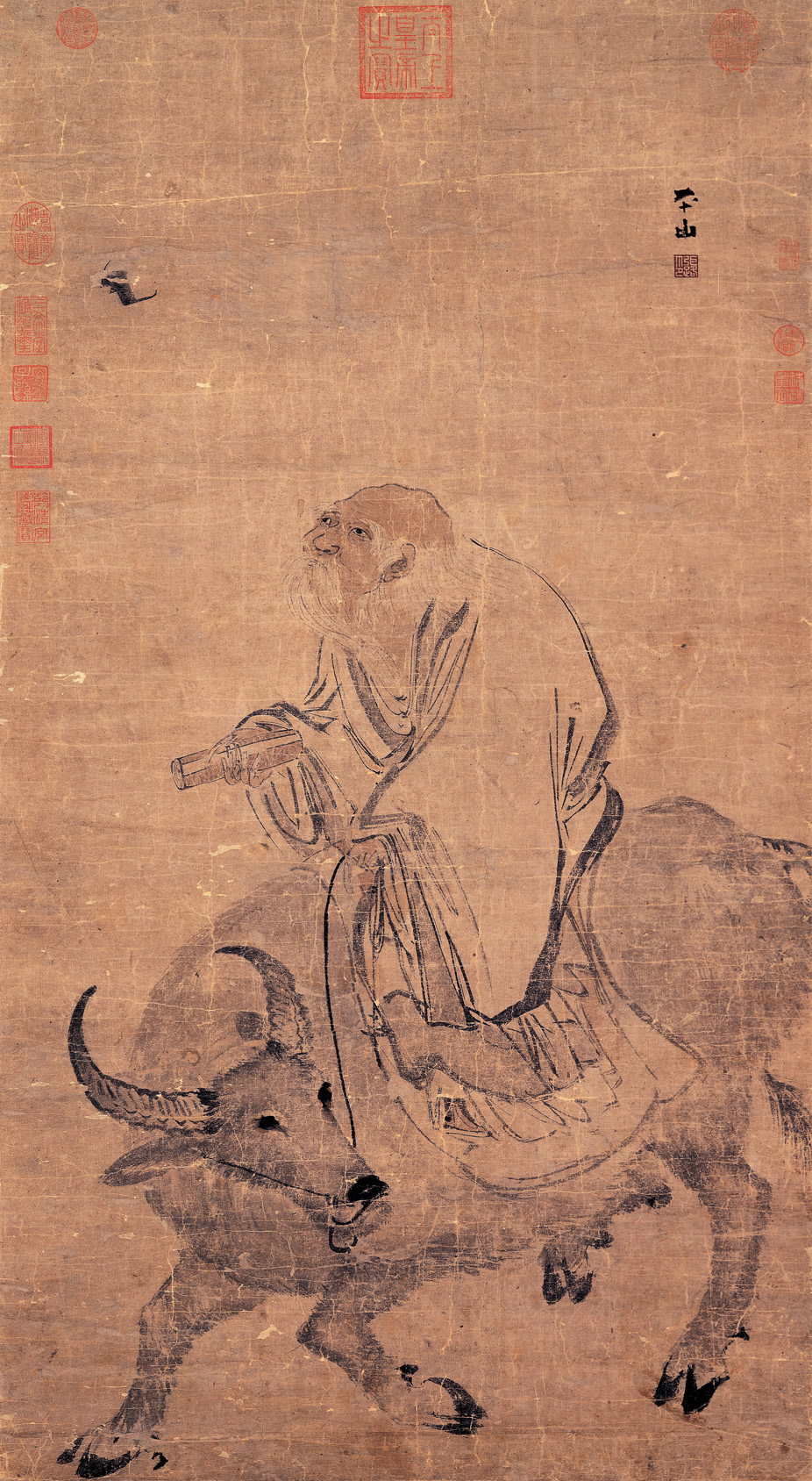3. Las bases textuales del taoísmo
Extractos de la Daodejing
(1)
El Tao que puede ser expresado no es el verdadero Tao.
El nombre que se le puede dar no es su verdadero nombre.
Sin nombre es el principio del universo.
(42)
El Tao engendra el uno, el uno engendra el dos,
el dos engendra el tres. El tres engendra todos los seres.
Todas las cosas se someten a yin y abrazan el yang.
Suavizan su energía para lograr la armonía.
(2)
Ser y no-ser se engendran uno a otro.
Lo difícil y lo fácil mútuamente se integran.
Ancho y angosto se forjan uno a otro.
Alto y bajo se corresponden uno a otro.
Voz y tono se armonizan uno a otro.
Anverso y reverso se suceden.
(64)
El que se apega a algo terminará perdiéndolo.
Por eso el hombre sabio no se agita por nada
y nunca se equivoca
no se apega a nada y nada pierde.
(57)
Cuantas más limitaciones y prohibiciones haya,
más pobre será el pueblo.
Cuantas más personas posean armas letales,
más confusión en el imperio.
A más habilidad del pueblo en las artes
mayor producción de cosas extrañas.
A más leyes y ordenanzas,
más bandoleros y ladrones.
Por eso el sabio dice:
No hago nada y la gente espontáneamente se transforma.
Estoy quieto y la gente espontáneamente se corrige.
No tengo interés en las ganancias y la gente espontáneamente se enriquece.
Practico el no-hacer
y el pueblo vuelve a la simplicidad.
Traducción de Charles Muller
http://www.acmuller.net/con-dao/daodejing.html (02/09/2014).
(02/09/2014).
Algunos extractos de la Daodejing (Escritura en el Dao y poder interior). Se trata de una breve (alrededor de 5000 caracteres) escritura taoísta, secciones de las cuales se remontan a, por lo menos, los siglos IV y V a. C. Su título original fue el Laozi (Libro de los Venerables Maestros), llamado así por la mítica figura de Laozi (Maestro Lao). Situado en el conjunto de la historia taoísta, la Daodejing es probablemente el texto más influyente.
Extractos del Zhuangzi
2:8
El Hombre Perfecto es divino. Aunque los grandes pantanos ardan, no le pueden quemar; aunque los grandes ríos se congelen, no siente el frío; el rayo que corta las montañas y el huracán que agita el mar, no pueden asustarlo. Un hombre como éste monta las nubes y la niebla, a caballo entre el sol y la luna, y vaga más allá de los cuatro mares. Incluso la vida y la muerte no tienen ningún efecto sobre él, y mucho menos las reglas de pérdidas y ganancias!"
18:2
La esposa de Zhuangzi murió. Cuando Huizi acudió a expresarle sus condolencias, encontró al maestro tirado en el suelo con las piernas extendidas tamborileando sobre una tinaja y cantando. —Junto a ti vivió—dijo el maestro Hui, — juntos educasteis a vuestros hijos, juntos envejecisteis y ahora tu mujer ha desaparecido. Vale que no llores su muerte pero ¿no es excesivo y desmedido estar tocando y cantando?"
—No es así —dijo el maestro Zhuangzi.— ¿Cómo iba a ser diferente de los demás y no estar triste y afectado por la muerte de mi esposa? Pero pensando sobre su origen me doy cuenta de que en un principio no había nacido. No solo no había nacido sino que originariamente no tenía forma. No solo no tenía forma, sino que inicialmente no tenía Qi. Entremezclada en una masa confusa y caótica se produjo una transformación y tuvo Qi. Qi se transformó y tuvo forma. La forma se transformó y ocasionó su nacimiento. Ahora se ha producido otra transformación y ha muerto. Es como la sucesión de las cuatro estaciones de primavera a otoño, de invierno a verano.
Ahora yace ahí durmiendo feliz y dichosa en la Gran Cámara. Si yo siguiera gimiendo y llorando, creo que no habría entendido nada sobre la vida, por eso he dejado de hacerlo.
http://camesasoft.com/cuadernochino/ensenanzas-del-maestro-zhuangzi/
Traducción (ligeramente modificada) por Burton Watson
http://terebess.hu/english/chuangtzu2.html (02/09/2014).
Algunos extractos son del Zhuangzi (Libro del Maestro Zhuang), otros son textos fundacionales del taoísmo que llevan el nombre de su autor, el Maestro Zhuang. Algunos capítulos, los más antiguos, datan de finales del siglo IV a. C., mientras que las otras partes datan de uno o dos siglos más tarde.
Lao-Tse montado en un buey

Lao-Tse montado en un buey, pergamino colgado, siglo XVI, China.
Color de la luz en el papel, National Palace Museum de Pekíng
Obtenido en:
http://commons.wikimedia.org/...Zhang_Lu-Laozi_Riding_an_Ox.jpg
(02/09/2014).
De dominio público
Retrato de Lao-Tse, el pseudo-histórico autor de la Daodejing, montando un buey y llevando en la mano su obra maestra.






